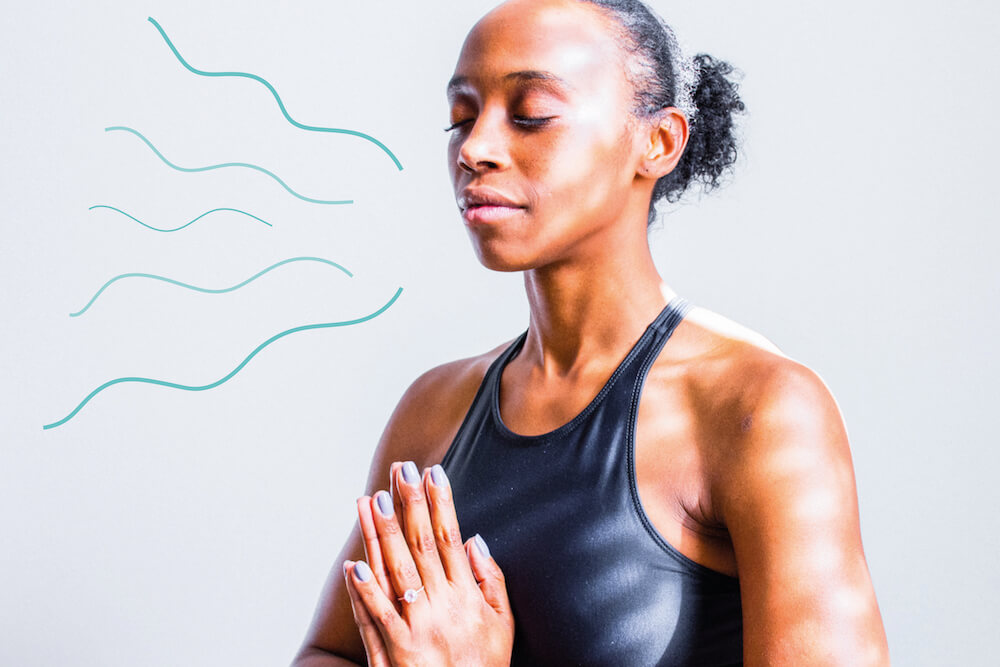Sometimes you just can’t catch your breath. Your attention is split a million different ways between work, responsibilities and an overwhelming sense of pressure. You can’t concentrate. You feel as though there’s not enough oxygen in the room. We can help.
As basic as it sounds, when you’re stressed out, tired and overworked, taking a little time to sit and slowly fill your lungs with air can make the difference between managing to centre yourself and spiralling into panic. Best of all, it’s a free and very accessible wellness technique - all you need is a few minutes of time and the ability to breathe.
Mindfully controlling your breathing can help you to feel calm, relaxed and in control, as well as lowering blood pressure and increasing awareness of your mind and how your actions affect your moods and emotions.
Here are some breathing techniques that have been used for centuries in yoga, meditation and other similar practices. Before you try any of them, you should sit or lie in a comfortable and calm position with your eyes closed. If you’re ready to relax, take an inhale, an exhale and let’s go.
Nadi Shodhana, alternate nostril breathing
Simple yet powerful, this first technique is the one to try if your mind is racing or you’re having trouble falling asleep. This breathing exercise helps to create an inner balance by regulating the flow of air through your nose. The term Nadi Shodhana translates to ‘clearing the channels of circulation’, and that’s exactly what it does.
Hold your dominant hand up to your nose. With a thumb or your first finger, press your right nostril closed and inhale deeply through your left nostril. When your lungs are full, release your finger and press your left nostril shut, then exhale through your right nostril. Continue for one to two minutes, then switch directions for the same amount of time, so you inhale and exhale the same amount through both sides of your nose.
4-7-8 breathing
This well-known exercise for breathing was developed by Dr Andrew Weil. It was based on a yoga technique called pranayama, which helps practitioners to gain control over their breathing. It is designed to deeply relax your body, and is especially good for calming a racing heart.
Lightly press the tip of your tongue to the roof of your mouth, purse your lips and exhale until your lungs are empty. Close your mouth and gently inhale through your nose for a count of four. Then, hold your breath for seven seconds. Finally, press your tongue back on the roof of your mouth, purse your lips again and breath out for a count of eight, until your lungs are empty once more.
This technique can make you feel a little lightheaded when you first try it, so take it slowly and carefully. The cycle should be repeated for four times the first time you try it, and you should work your way up repeating it eight times.
Sama Vritti, box breathing
Called ‘box breathing’ because it uses a technique of inhaling and exhaling for an equal amount of time, Sama Vritti is one of the most simple breathing exercises to try and best of all, it can be done anywhere. If you find your heart rate spiking during a work meeting or in the line at a coffee shop, this is a simple and unobtrusive technique to try. Box breathing can help to calm your autonomic nervous system, which naturally reduces the stress hormones in your body.
Breathing through your nose, bring your attention to the natural pattern of your breathing. Feel the air passing your nostrils and flowing in and out of your lungs. Slowly, begin to count to four as you inhale and again as you exhale, until you’re breathing in for four counts and out for four counts. If you like, you can increase the counts to six or even eight seconds - whatever feels the most comfortable and natural for you is best. The important thing is that the counts are equal for each inhale and exhale.
Kapalabhati, skull shining breath
This breathing technique is unique in that it reverses the familiar pattern of conscious breathing. Generally you concentrate on your exhalation, but in this case the breath in is passive and the breathing out is active. This means that Kapalabhati is energising and gives you a sense of inner power and heat, making it perfect for when you want to feel strong and powerful. This is one to try before a challenging workout or a big meeting.
‘Kapala’ translates to ‘skull’, and ‘bhati’ to ‘shine’ or ‘lustrous’. This breathing exercise is said to make your skull shine by supplying your brain with a large supply of oxygen-rich blood. It’s time to shine on, baby. Now is your moment.
Place lightly on your stomach. Take a long, slow inhale through your nose, feeling your hand move as your chest fills. Then exhale powerfully and quickly through your nose by contracting your lower stomach, using your hand to guide you. You will naturally quickly inhale again (this is the passive inhale previously mentioned). Focus on forcefully exhaling, trying to keep to a pace of one whole breath cycle for around two seconds, for a total of ten breaths.



















